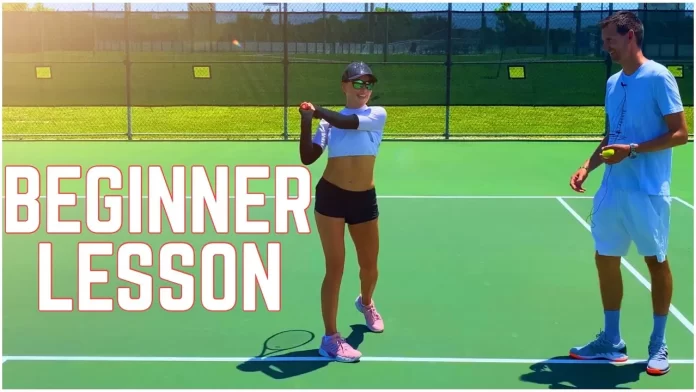Tennis is a dynamic and exhilarating sport that offers numerous physical and mental benefits. Whether you’ve watched the Grand Slam tournaments or are simply drawn to the idea of picking up a racquet and hitting the ball, learning tennis can be a rewarding experience.
As a beginner, understanding the basics and essential techniques will set you on the right path to becoming a competent and confident player. In this article, we will guide you through the fundamentals of learning tennis and help you get started on your exciting tennis journey. It’s also a good idea to watch professionals play, there are many tennis sporting events each year, including the four major Grand Slams.
- Equipment and Court
Before diving into the techniques, it’s crucial to familiarize yourself with the equipment and the tennis court. A standard tennis court is a rectangular area with specific lines marking its boundaries. It is typically 78 feet long and 27 feet wide for singles matches, and 36 feet wide for doubles matches.
You’ll need a tennis racquet to play the sport. As a beginner, opt for a racquet with a larger head size and moderate weight, as this will provide a good balance of power and control. Don’t forget to wear comfortable clothing and proper tennis shoes that provide support and grip.
- The Grip
Mastering the correct grip is the foundation of every tennis stroke. The two most common grips are the Eastern grip and the Western grip. For beginners, the Eastern grip is recommended for its versatility and ease of use. To achieve this grip, imagine you are shaking hands with the racquet, and the V-shape formed between your thumb and index finger should point towards your shoulder.
- The Basic Strokes
- Forehand
The forehand is one of the most essential shots in tennis. To execute a forehand, stand with your feet shoulder-width apart and your body sideways to the net. Hold the racquet with an appropriate grip, and as the ball approaches, swing the racquet forward while shifting your weight from the back foot to the front foot. Make contact with the ball in front of your body and follow through with the racquet across your body. Keep your eye on the ball throughout the stroke.
- Backhand
The backhand is executed on the opposite side of the body from the forehand. There are two common backhand techniques: the one-handed backhand and the two-handed backhand. The two-handed backhand is easier for beginners, as it provides more stability and control. Similar to the forehand, position yourself sideways to the net, and swing the racquet in a fluid motion from low to high, making contact with the ball in front of your body.
- Footwork
Tennis is a sport that requires swift and efficient footwork. Good footwork allows you to reach the ball in time and position yourself for a balanced shot. Stay light on your feet and practice quick lateral movements, split steps, and pivots to be able to move around the court effectively.
- Serving
The serve is the shot that starts every point in tennis. It’s essential to develop a consistent and powerful serve. The grip for the serve can vary, but the Eastern grip is commonly used. Start with your feet shoulder-width apart, toss the ball slightly in front of you, and swing the racquet upward to make contact with the ball at its highest point. Focus on generating power from your legs and core while maintaining control.
- Rules and Scoring
Understanding the rules and scoring system is vital to play tennis competitively. Tennis is usually played in sets, and a set is won by the player who first reaches six games with a margin of two games. If the score is tied at 6-6, a tiebreaker is played. The player who wins seven points with a margin of two points wins the tiebreaker and the set.
- Practice and Patience
As with any sport, practice is key to improvement. Set aside regular practice sessions and focus on honing your techniques. Tennis can be challenging at first, but with perseverance and patience, you will see progress over time.
In conclusion, learning tennis as a beginner can be both exciting and challenging. By understanding the basics, mastering essential techniques, and dedicating time to practice, you will gradually build your skills and confidence on the court. Remember to stay positive, have fun, and enjoy the process of learning this fantastic sport. Happy hitting!



